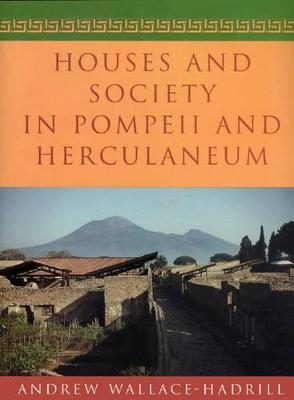
Houses and Society in Pompeii and Herculaneum
Seiten
1994
Princeton University Press (Verlag)
978-0-691-06987-6 (ISBN)
Princeton University Press (Verlag)
978-0-691-06987-6 (ISBN)
- Titel ist leider vergriffen;
keine Neuauflage - Artikel merken
Through a detailed analysis of over 200 houses preserved by the eruption of Vesuvius, this study reveals the dynamic social environment of early imperial Italy, and the vital role that houses played in the definition of Roman culture.
Few sources reveal the life of the ancient Romans as vividly as the houses preserved by the eruption of Vesuvius. Wealthy Romans lavished resources on shaping their surroundings to impress their crowds of visitors. The fashions they set were taken up and imitated by ordinary citizens. This study explores the rich potential of the houses of Pompeii and Herculaneum in order to offer new insights into Roman social life. Combining archaeological evidence with Roman texts and comparative material from other cultures, the author raises a range of new questions. How did the organization of space and the use of decoration help to structure social encounters between owner and visitor, man and woman, master and slave? What sort of "households" did the inhabitants of the Roman house form? Through analyses of the remains of over two hundred houses, Wallace-Hadrill reveals the remarkably dynamic social environment of early imperial Italy, and the vital part that houses came to play in defining what it meant "to live as a Roman."
Few sources reveal the life of the ancient Romans as vividly as the houses preserved by the eruption of Vesuvius. Wealthy Romans lavished resources on shaping their surroundings to impress their crowds of visitors. The fashions they set were taken up and imitated by ordinary citizens. This study explores the rich potential of the houses of Pompeii and Herculaneum in order to offer new insights into Roman social life. Combining archaeological evidence with Roman texts and comparative material from other cultures, the author raises a range of new questions. How did the organization of space and the use of decoration help to structure social encounters between owner and visitor, man and woman, master and slave? What sort of "households" did the inhabitants of the Roman house form? Through analyses of the remains of over two hundred houses, Wallace-Hadrill reveals the remarkably dynamic social environment of early imperial Italy, and the vital part that houses came to play in defining what it meant "to live as a Roman."
Andrew Wallace-Hadrill is Professor of Classics at the University of Reading in England.
| Zusatzinfo | 16 color illus. 67 halftones 68 line illus. |
|---|---|
| Verlagsort | New Jersey |
| Sprache | englisch |
| Maße | 178 x 254 mm |
| Gewicht | 879 g |
| Themenwelt | Geschichte ► Allgemeine Geschichte ► Vor- und Frühgeschichte |
| Geschichte ► Allgemeine Geschichte ► Altertum / Antike | |
| Geisteswissenschaften ► Geschichte ► Regional- / Ländergeschichte | |
| Geschichte ► Teilgebiete der Geschichte ► Kulturgeschichte | |
| Geschichte ► Teilgebiete der Geschichte ► Sozialgeschichte | |
| ISBN-10 | 0-691-06987-5 / 0691069875 |
| ISBN-13 | 978-0-691-06987-6 / 9780691069876 |
| Zustand | Neuware |
| Haben Sie eine Frage zum Produkt? |
Mehr entdecken
aus dem Bereich
aus dem Bereich
auf den Spuren der frühen Zivilisationen
Buch | Hardcover (2023)
C.H.Beck (Verlag)
20,00 €
Konzepte – Methoden – Theorien
Buch | Softcover (2024)
UTB (Verlag)
39,90 €
Was Pompeji über uns erzählt
Buch | Hardcover (2023)
Propyläen (Verlag)
32,00 €


